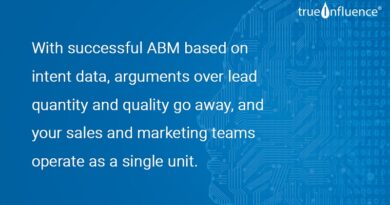Finding the Right Mix: Balancing One-to-One, One-to-Few, and One-to-Many ABM
Balancing one-to-one, one-to-few, and one-to-many ABM strategies is one of the biggest challenges and opportunities for modern B2B marketers. Each approach serves a distinct purpose, requires a different level of personalization, and delivers unique outcomes, but when orchestrated together, they create a powerful ecosystem that drives growth efficiently while maintaining a personal touch. The key lies in knowing when to deploy each strategy, how to integrate them, and how to keep them aligned with broader business objectives.
One-to-one ABM is the most personalized approach, reserved for your highest-value accounts that warrant deep research, custom messaging, and highly tailored campaigns. This is where marketing and sales teams collaborate closely to design a journey built entirely around a single account’s business goals, decision-makers, and buying dynamics. It is resource-intensive, but the payoff is often significant, building trust and positioning your organization as a strategic partner rather than a vendor.
The concepts of one-to-one ABM are applied to a limited group of accounts that have comparable traits, sectors, or difficulties in one-to-few ABM. Here, personalization remains meaningful, but content and campaigns are scaled slightly to reach multiple accounts efficiently. This approach works particularly well when you want to target a segment with shared traits while still delivering messages that feel highly relevant and valuable.
One-to-many ABM, sometimes referred to as programmatic ABM, scales the model to a much broader audience, leveraging technology, automation, and data-driven targeting to reach hundreds or even thousands of accounts. While the level of personalization is lighter, smart segmentation and dynamic content can still ensure that messages feel targeted, not generic. It’s a way to extend ABM principles without overwhelming resources, especially when paired with strong analytics to identify which accounts merit deeper engagement.
The real power of ABM comes from combining these strategies rather than choosing one over the others. By segmenting accounts based on potential value, strategic importance, or buying readiness, companies can dedicate high-touch resources to the few that matter most, apply focused campaigns to mid-tier segments, and run scalable initiatives for the rest. This balanced approach maximizes ROI, strengthens customer relationships at every level, and ensures that no opportunity is left behind while maintaining operational efficiency.




